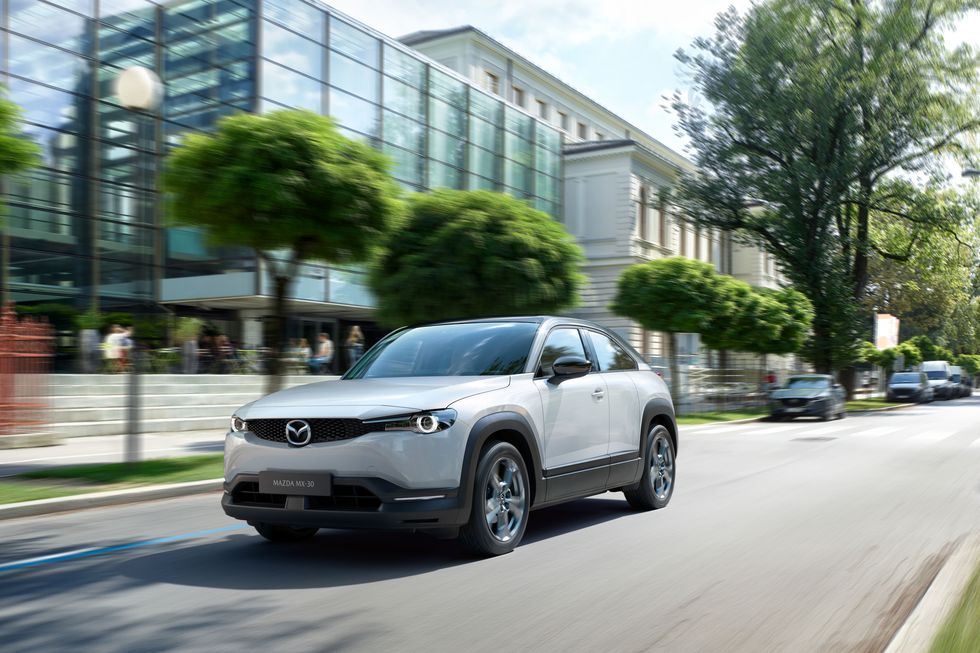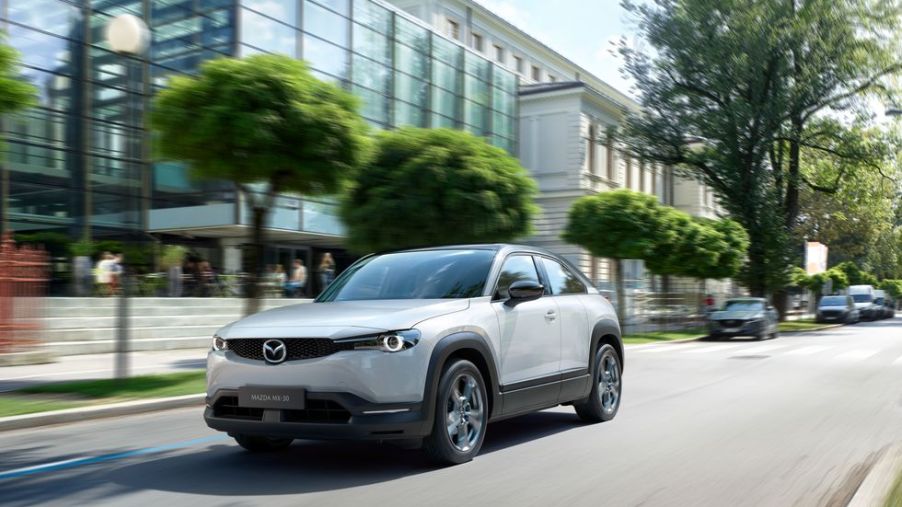
Mazda Says Your Higher Range EV Is Bad For Environment
As we edge into 2020 we didn’t expect to be seeing a headline like this: Mazda Says Your Higher Range EV Is Bad For The Environment. Really? That’s way off of the narrative we’ve read and heard for the last dozen years or so. Why would Mazda say this about its first EV; the MX-30? Let’s see.
Mazda will soon have its own electric vehicle; the MX-30. It’s a compact crossover EV with a 35.5-kilowatt-hour battery pack, for a range of around 120 miles. That range has brought up many questions about why Mazda would offer an EV with such a limited range. The main concern about EVs expressed in focus groups and consumer clinics are range. Numero uno.
Why does Mazda say higher range EVs are bad?
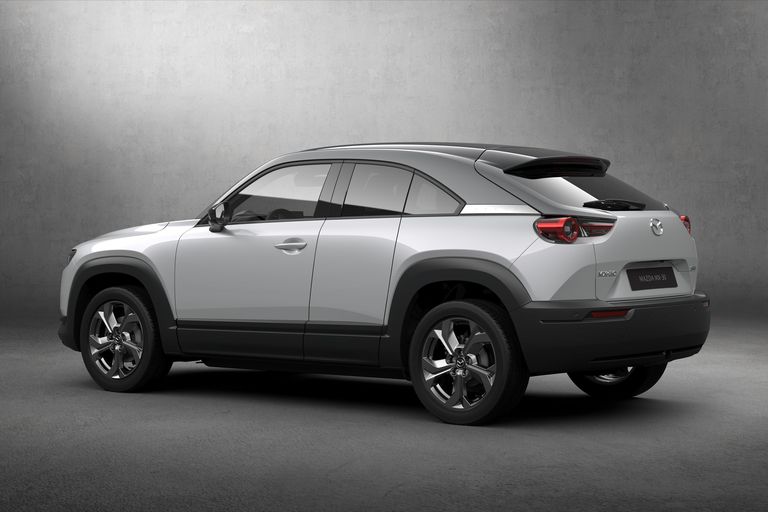
Naturally, all of the EV manufacturers are scrambling to find ways to increase the range to ease “range anxiety” and get consumers to switch to EVs. Except for Mazda. And Mazda has a reason why it went this direction. It’s not for price, weight, complication, or some other reason we have yet to determine.
No. The reason according to Mazda Europe deputy general manager of R&D Christian Schultze is that the MX-30 has a battery pack that is “reasonably sized.” This according to Automotive News. He says if the MX-30 was offered with a battery pack that was any bigger it would produce emissions on a par with diesel-powered vehicles.
Mazda says that larger battery packs produce similar emissions to diesel
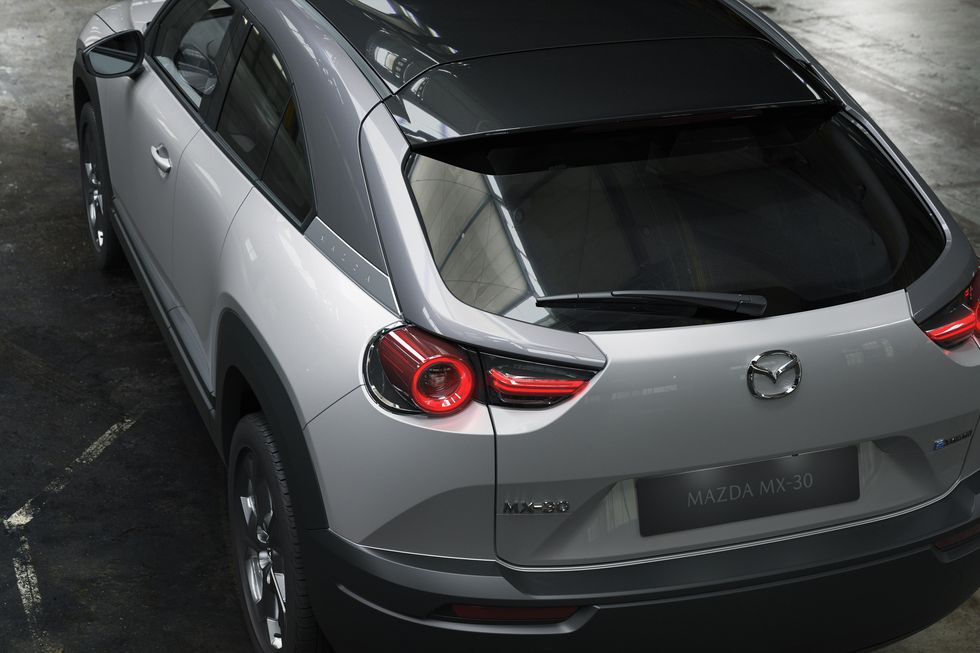
Let’s repeat: a battery pack any bigger than 35.5-kilowatt-hours would produce similar emissions to a diesel engine. The claim is based on the battery pack’s life-cycle expectations for total CO2 emissions. Schultze went on to say even replacing the battery at 100,000 miles would still match a diesel engine’s emissions.
To further make the point, Mazda says that exchanging the 35.5-kWh battery pack with one that has a 95-kWh pack would substantially increase CO2 emissions. Once the hypothetical 95-kWh pack was replaced emissions would increase even more.
So, Mazda is factoring in the environmental footprint
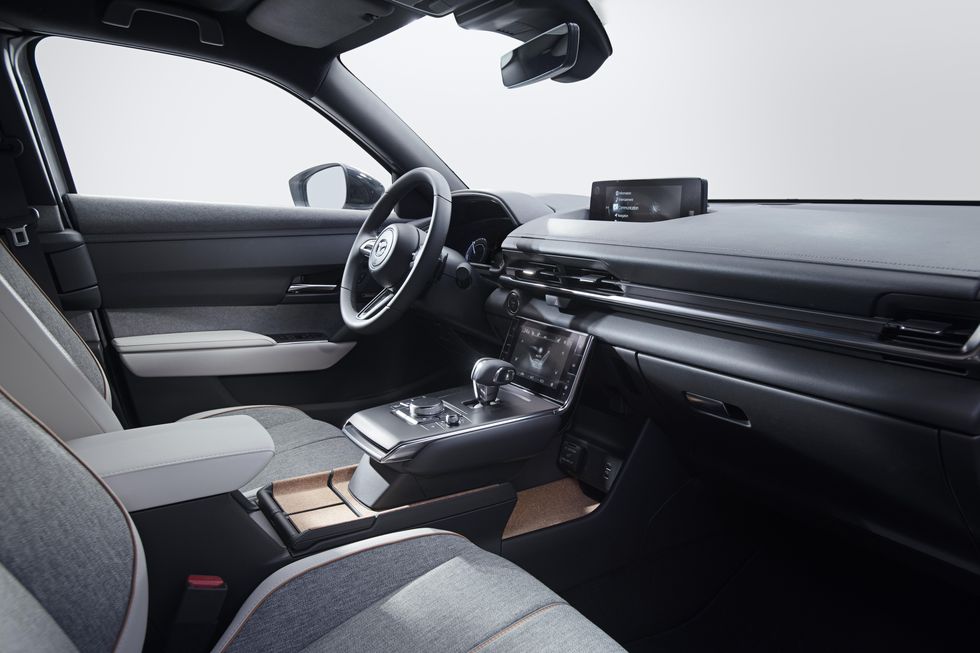
A lot of this is based on the environmental footprint involved with battery disposal, battery production, price, and factoring in range. Obviously, if one is concerned enough about the environment then it goes without saying that consumers would also be interested in decreasing the overall footprint.
Mazda Europe chief Yasuhiro Aoyama told Automotive News, “We based the battery size on the needs of our target customers, who are young, urban buyers. The second factor was that when we did a life-cycle assessment, which considered not only the emissions caused while driving but the emissions from the production of the battery, we found that a 35.5-kilowatt-hour battery would result in CO2 emissions similar to our diesel models. That is why we selected a right-sized battery for our first battery-electric vehicle.
“We understand, however, that some customers require cars that can provide a longer range. Therefore, as a second step, we will deploy a rotary-engine based range extender to the vehicle. We also need to closely monitor how fast battery capability progresses. If it improves significantly, we may consider a bigger battery in the future.”
The MX-30 will not be sold in the US initially. It will come here to late-2020 or 2021. Mazda is only revealing that a motor will be in front so at least initially it looks like the MX-30 will be front-wheel-drive.
